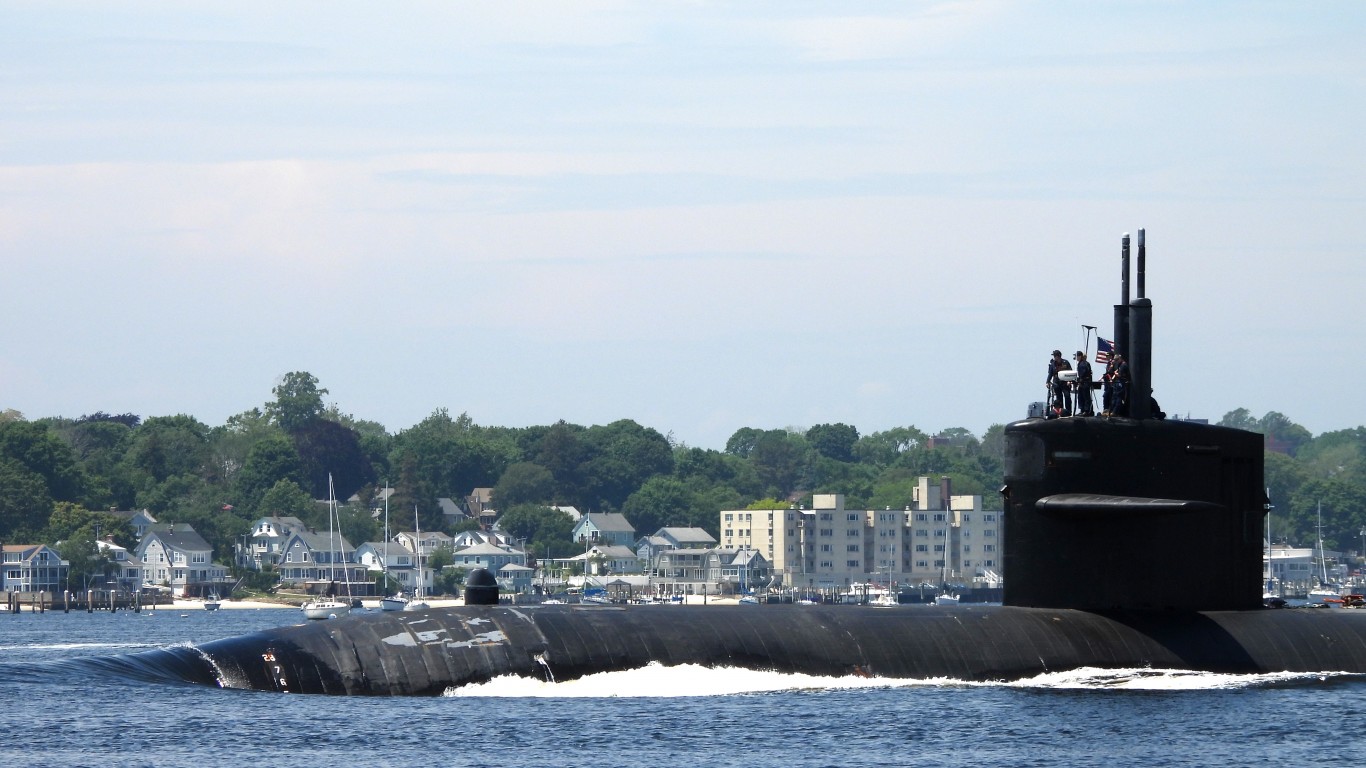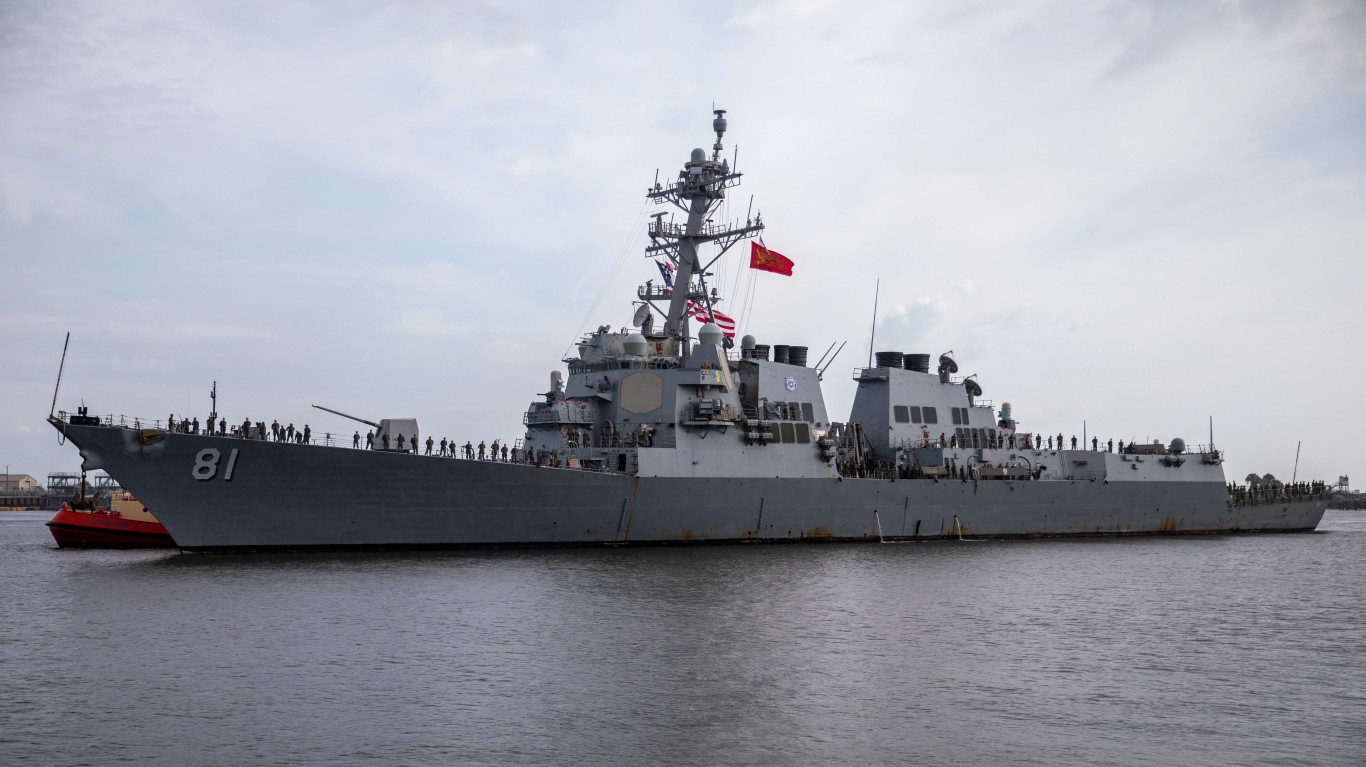
The latest Department of Defense budget made way for the very early retirement of four Freedom-class littoral combat ships. These ships, which were among the newest vessels in the Navy, are being phased out due to mechanical issues and the rapidly changing nature of America’s military priorities, from smaller engagements with insurgent groups to escalating tensions with global superpowers Russia and China.
The U.S. is currently the world’s indisputable top naval power with an estimated 243 U.S. Navy surface and underwater boats capable of anything from deploying Marines on any shore using dock landing boats like the San Antonio-class transport dock to launching nuclear attacks with Trident II missiles launched from Ohio-class submarines known as “boomers.”
To identify the 19 classes of vessels that make up the ships and submarines of the U.S. Navy, 24/7 Wall St. referenced military data site World Directory of Modern Military Warships’ directory of all active ships in the U.S. The ship and submarine classes are ranked in order of the number of vessels currently in active use by the navy, according to WDMMW. Any ships on order were excluded.
The most common U.S. Navy boat is the Arleigh Burke-class destroyer, with 68 such vessels. Meanwhile, 28 Los Angeles-class attack submarines prowl beneath the waves in potential search-and-destroy missions.
The newest addition to the fleet is the USS Gerald R. Ford aircraft carrier, the first of 10 that are being built as successors to the 10 Nimitz-class carriers sailing the world’s seas and oceans. (This is the world’s largest warship.)
Here are the warships and submarines of the U.S. Navy.
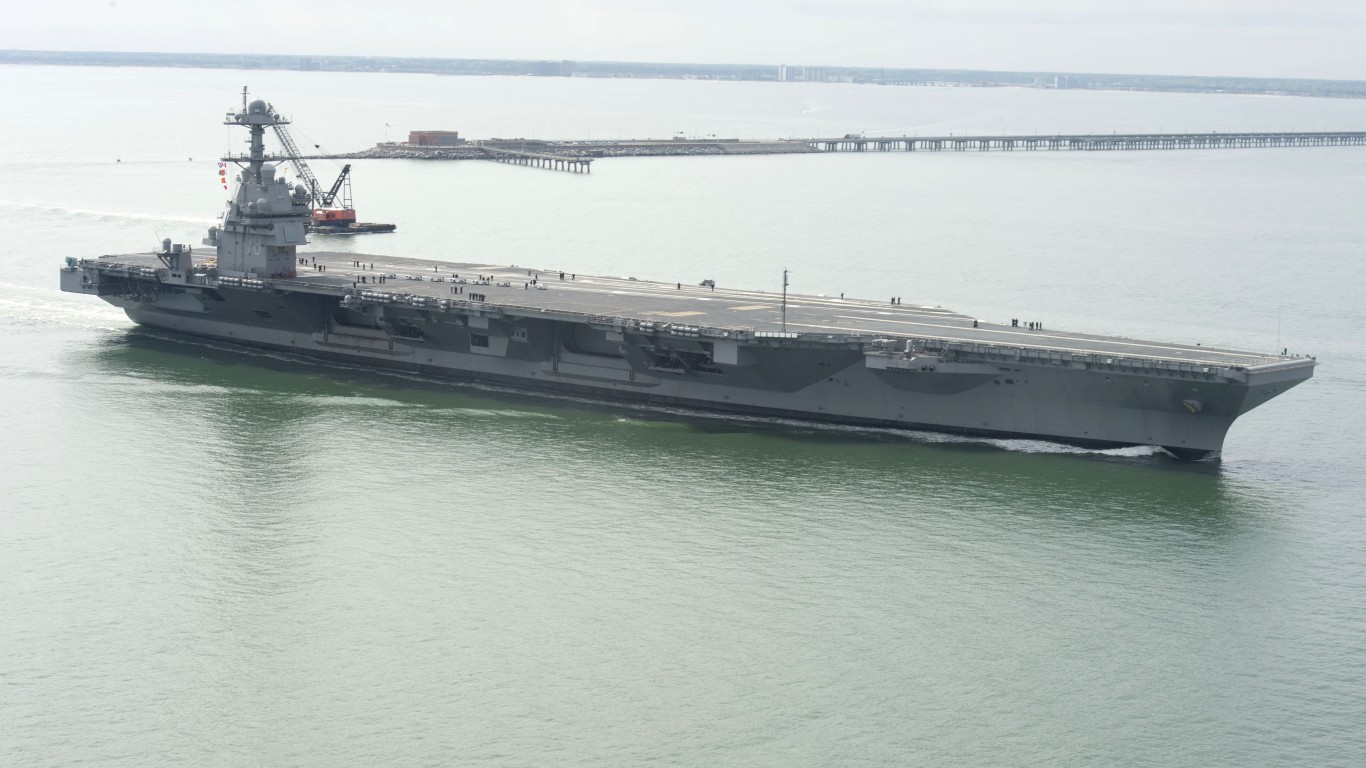
19. Ford-class Aircraft carrier
> Number of boats: 1
The first of this latest class of nuclear-powered aircraft carriers was delivered in 2017, and nine more are in the works. Built by Newport News Shipbuilding, a division of Huntington Ingalls, the Gerald R. Ford-class carrier is replacing the existing Nimitz and Enterprise carriers and is purported to cost less to operate and maintain than its predecessors.
[in-text-ad]
18. America-class Amphibious assault ship
> Number of boats: 2 (tied)
Able to accommodate a number of helicopters , including tilt-rotor Osprey aircraft, the Northrop Grumman-built America-class amphibious assault ship is designed to deliver Marines to shore. It is also fitted with a Raytheon-built self-defense system. The ship is essentially a floating aircraft hangar that can be reconfigured to act as a command-and-control center, an aviation maintenance site, a fuel storage facility, or a hospital.
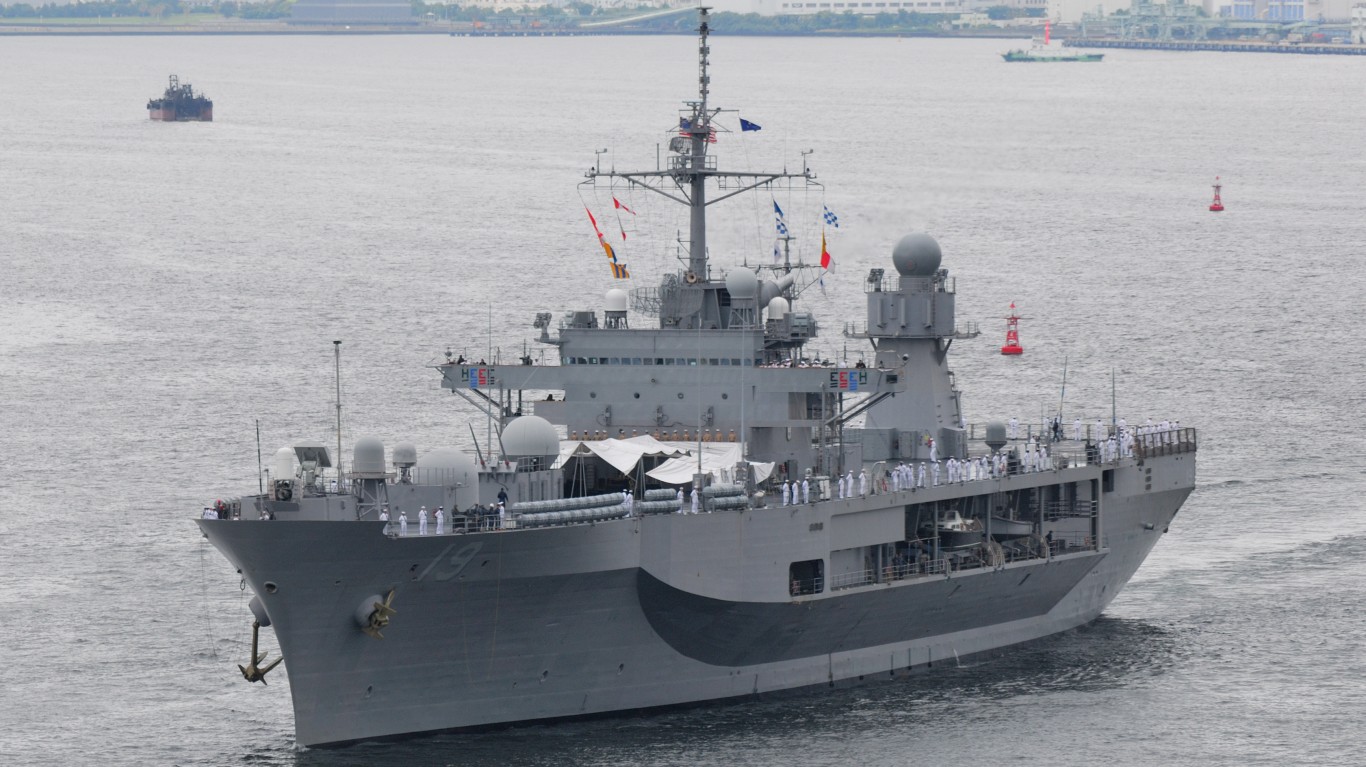
17. Blue Ridge-class Class command ship
> Number of boats: 2 (tied)
The Blue Ridge is the only U.S. naval vessel that was designed from the start to act as a command-and-control center for amphibious assaults. Built by Newport News Shipbuilding, it was the most advanced U.S. naval command vessel when it first took to the waves in 1971, and unlike its predecessors, it could keep up with an amphibious force traveling at 20 knots.
16. Zumwalt-class Guided missile destroyer
> Number of boats: 2 (tied)
The Zumwalt-class guided missile destroyer is named after the late Adm. Elmo Zumwalt, who at 49 became the youngest four-star admiral and the youngest to serve as Chief of Naval Operations. The vessels’ main goal is to provide anti-aircraft defense for Navy ships. The USS Zumwalt, built by General Dynamics Bath Iron Works, is the world’s largest destroyer. The ship’s unique bow design is purported to make it more stable in rough seas than other surface combat ships.
[in-text-ad-2]
15. Seawolf-class Submarine
> Number of boats: 3
The agile Los Angeles-class attack submarine is the backbone of the Navy’s submarine operations, but Seawolf-class subs are quieter, faster, larger, and are exceptionally good at patrolling the near-shore areas of the littoral (shallower water) zone. The boats constructed by General Dynamics Electric Boat Division are loaded with technology that can be used to conduct classified research and development, and they have more advanced sonar capabilities. Thanks to their staggering $3 billion-per-boat price tag, only three Seawolf subs were built.
14. Harpers Ferry-class Dock landing ship
> Number of boats: 4
The Harpers Ferry-class dock landing ship delivers landing craft and other amphibious assault vehicles, including crew and Marines. The ship is also capable of being a command-and-control center for these types of operations. The ships were built by New Orleans-based Avondale Shipyard, a Huntington Ingalls-owned facility that ceased shipbuilding for the U.S. Navy in 2014.
[in-text-ad]
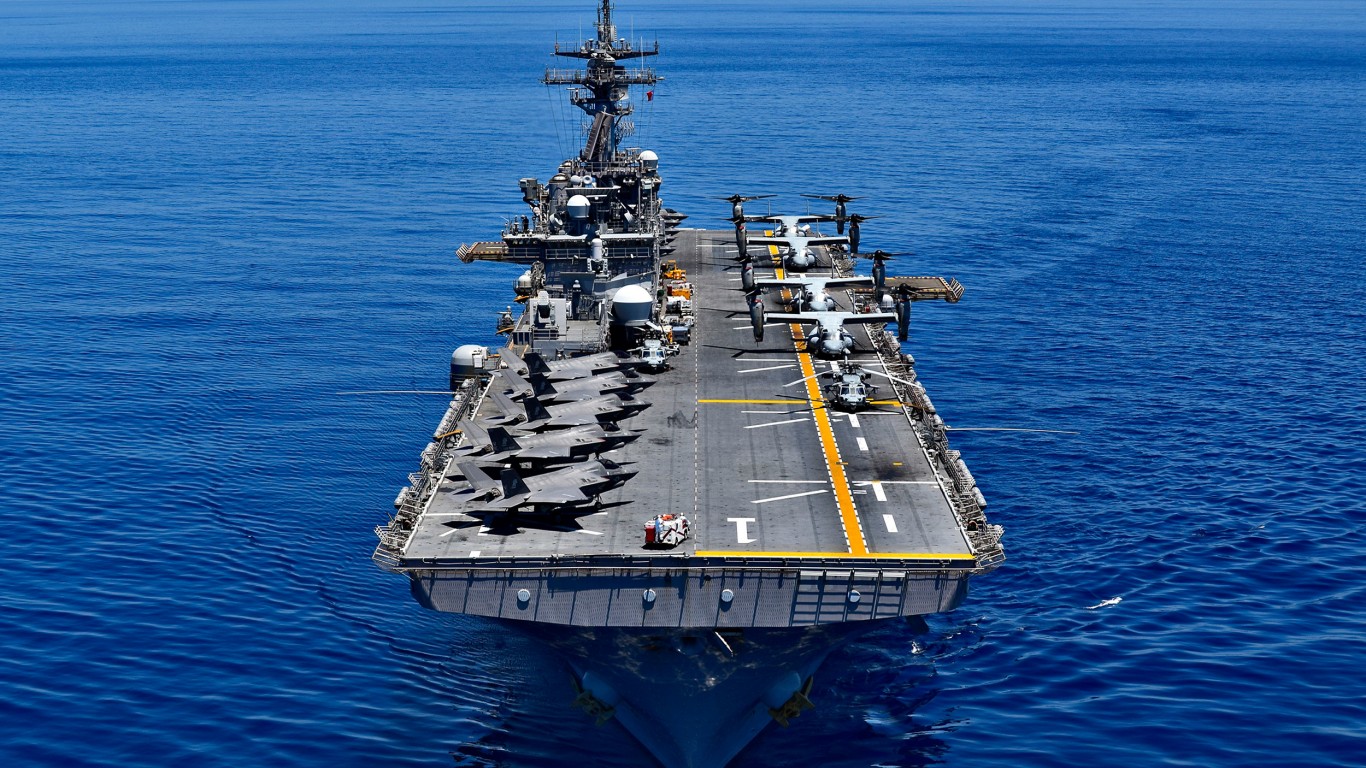
13. Wasp-class Amphibious assault ship
> Number of boats: 7 (tied)
The Wasp, which carries a mix of helicopters, is the Navy’s multipurpose amphibious assault vessel, each with a large deck. The ship is capable of inserting an entire Marine Expeditionary Unit of about 2,000 marines, using helicopters, amphibious vehicles, and other landing craft. The ships were built by Mississippi-based Northrop Grumman Ship Systems.
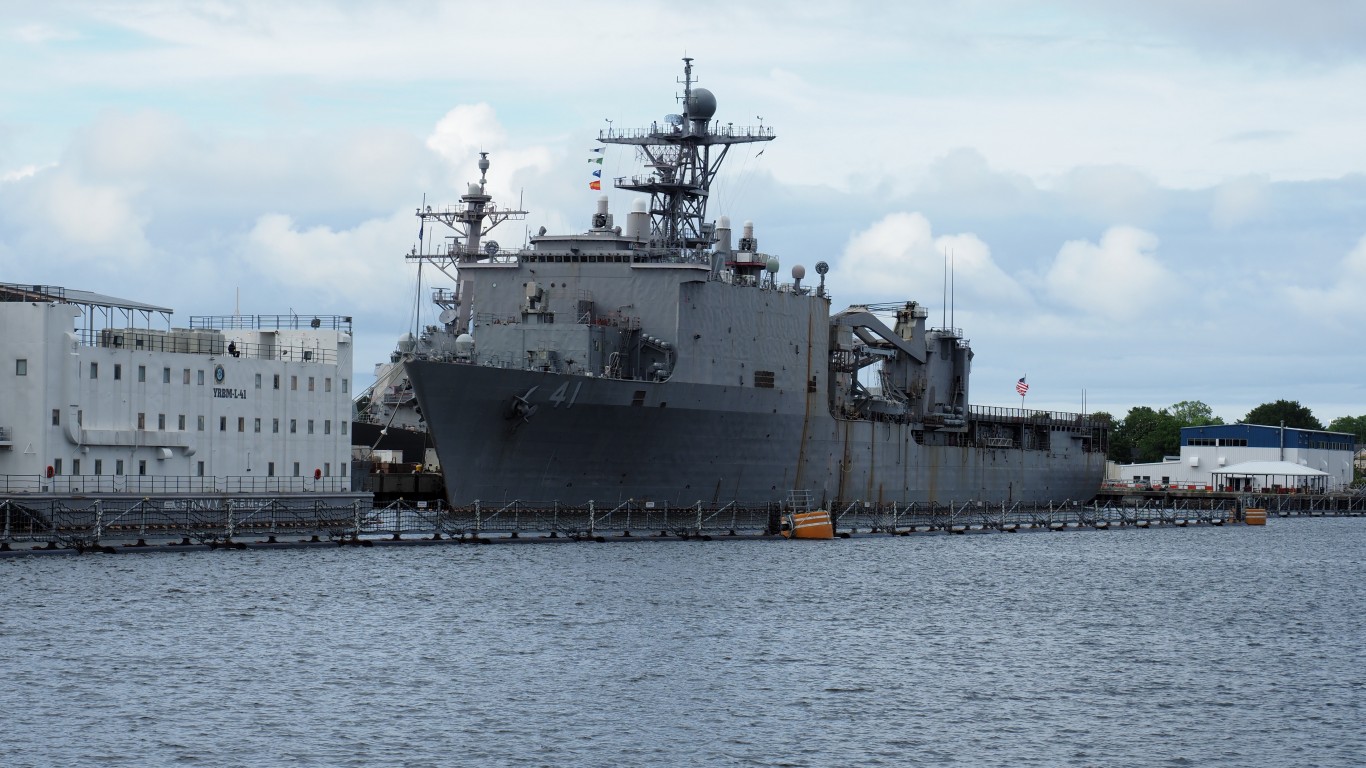
12. Whidbey Island-class Dock landing ship
> Number of boats: 7 (tied)
The Whidbey Island-class dock landing ship can carry more hovercraft landing vessels than any other U.S. Navy amphibious assault vessel. The ship has a flight deck large enough to deploy Osprey vertical landing and takeoff aircraft that can also be used to insert hundreds of Marines. The ships can carry between three and 21 amphibious landing craft, depending on their size, and two CH-53 heavy lift helicopters.
11. Avenger-class Mine countermeasures ship
> Number of boats: 8
Avenger-class ships were designed to find, classify, and destroy moored or bottom-dwelling mines. They were built by two Wisconsin-based shipbuilders: the now-defunct Peterson Builders and Marinette Marine, which is currently owned by Italian shipbuilder Fincantieri.
[in-text-ad-2]
10. Freedom-class Littoral combat ship
> Number of boats: 9
The troubled Freedom-class vessel is one of two classes of Navy littoral combat ships designed for shallow near-shore waters. Built by Lockheed Martin, the Freedom-class LCS has reportedly been wracked with so many technical problems the Navy announced plans earlier this year to scrap many of the $360 million vessels and possibly pawn them off to South American countries, including one that was delivered only in 2020.
9. Cyclone-class Patrol ship
> Number of boats: 10 (tied)
Cyclone-class ships patrol coastlines, ports, and waterways, engaging in interdiction surveillance, a key component of the Navy’s close-shore littoral operations. Built by Louisiana-based Bollinger Shipyards, these patrol boats are also used by the U.S. Coast Guard and have been deployed in the Arabian Gulf region as part of the U.S. war on terror.
[in-text-ad]
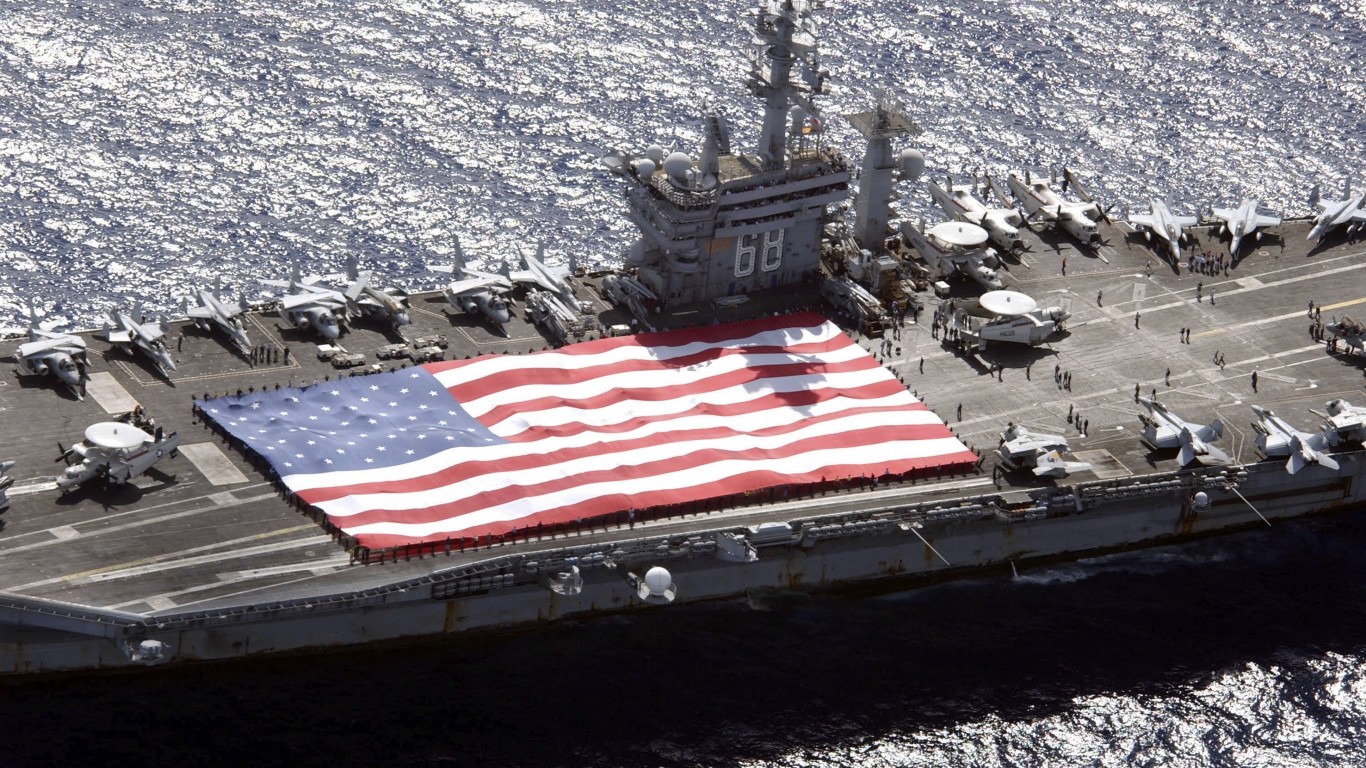
8. Nimitz-class Aircraft carrier
> Number of boats: 10 (tied)
Named after Adm. Chester W. Nimitz, a World War II Pacific Fleet commander, the Nimitz-class nuclear-powered aircraft carrier was introduced to maintain U.S. Navy capabilities as the previous Kitty Hawk and Enterprise carriers were being decommissioned. The Nimitz, built by Newport News Shipbuilding, is powered by two nuclear reactors compared to the eight used by the Enterprise vessels and can carry far more aviation fuel and ordnance than the WWII-era carrier. The Nimitz is currently in the process of being replaced by the Ford-class aircraft carrier.
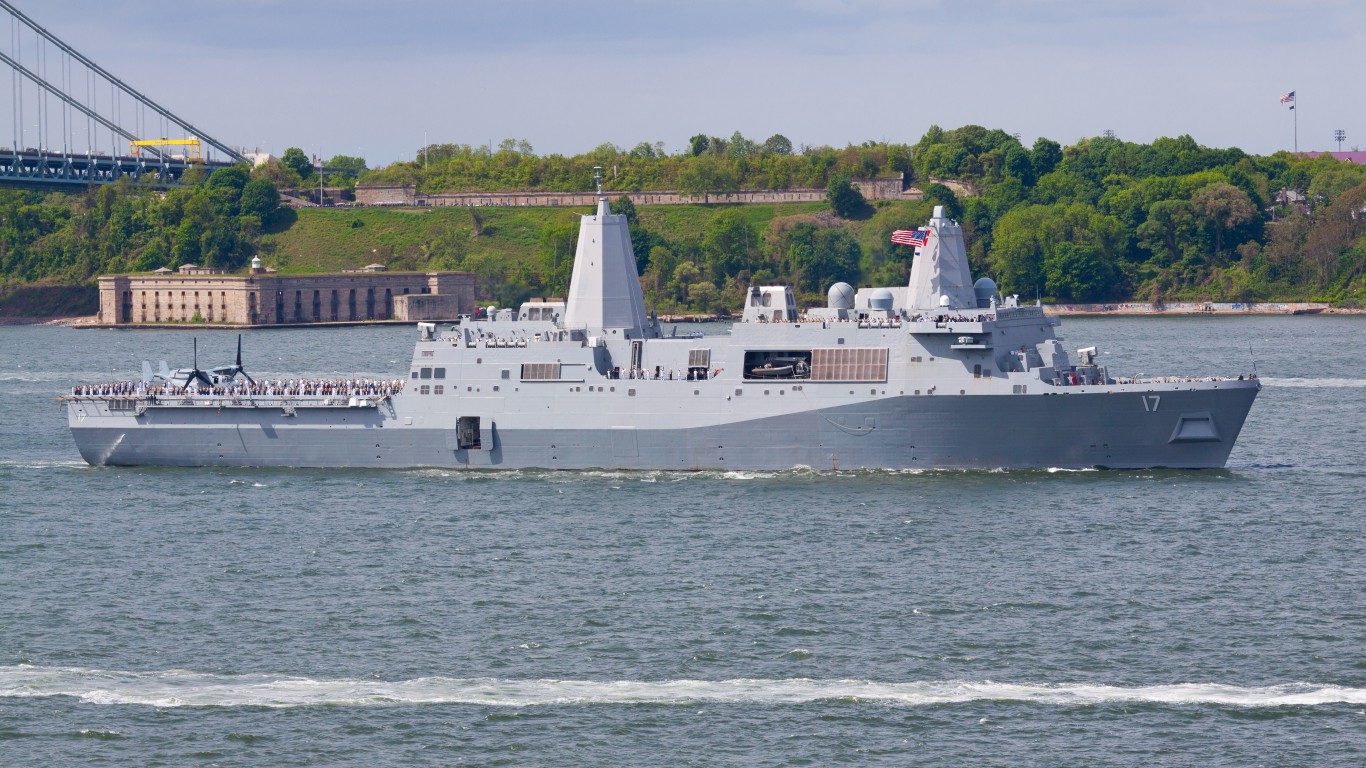
7. San Antonio-class Amphibious transport dock
> Number of boats: 11
Amphibious landings have long been a core element of naval warfare, which is why the U.S. Marine Corps is part of the U.S. Navy, even though it is a separate uniformed service. The San Antonio-class amphibious transport dock, built by Mississippi-based Ingalls Shipbuilding, is one of numerous U.S. Navy vessels designed to deliver Marines and their equipment and supplies from sea to land using amphibious vehicles and vertical-takeoff and landing aircraft like helicopters and Ospreys.
6. Independence-class Corvette
> Number of boats: 12
The Independence-class corvette (small warship) is a high-speed and agile littoral combat ship designed for shallow near-shore waters, built by Lockheed Martin, General Dynamics, and Austel, an Australia-based global shipbuilder. Both LCS classes, the Independence and Freedom, have been wracked with technical defects, including hulls that reportedly can crack at speeds above 15 knots in choppy waters.
[in-text-ad-2]
5. Ohio-class Submarine
> Number of boats: 18
The Ohio-class nuclear powered submarine is the larger and more heavily armed sibling of the speedier and more confrontational Los Angeles-class boat. The Ohio-class boats tend to avoid sonar detection and are known as “boomers” because of their tremendous destroying firepower: up to 24 Trident II ballistic missiles that can hit targets thousands of miles away.
4. Virginia-class Submarine
> Number of boats: 19
The Virginia-class nuclear-powered submarine is the newest in the U.S. Navy fleet, incorporating the latest tech in sonar avoidance, intelligence gathering, and weapons systems. Like the Los Angeles-class boat, it is an attack sub capable of seeking and destroying underwater and surface targets as well as firing Tomahawk missiles at land targets. Built by General Dynamics Electric Boat Division and Newport News Shipbuilding, the Virginia-class sub is the successor to the Los Angeles-class sub.
[in-text-ad]
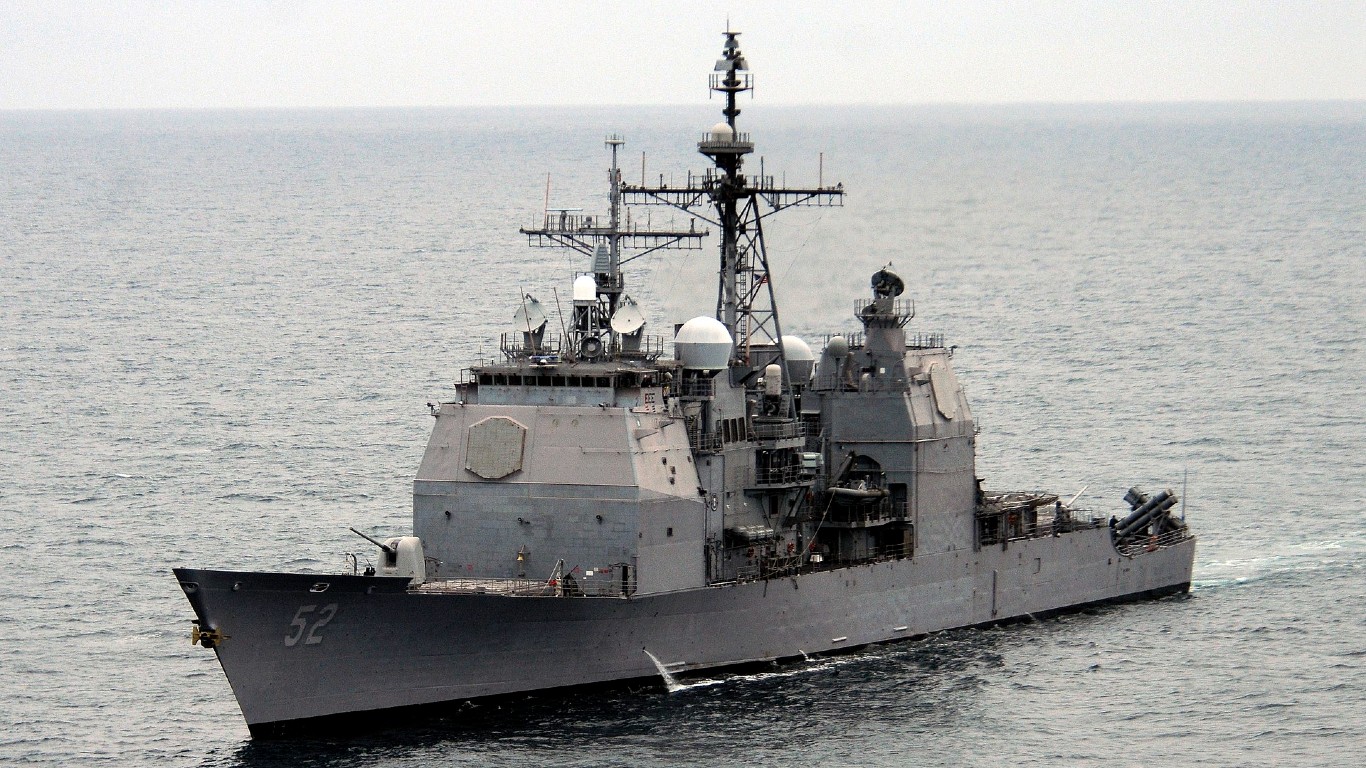
3. Ticonderoga-class Cruiser
> Number of boats: 22
The Ticonderoga-class is an Aegis guided missile cruiser that was built by Mississippi-based Ingalls Shipbuilding and Bath Iron Works of Maine. Aegis combat ships are armed with technology that tracks and guides missiles to their targets. The ships were used to guide Tomahawk missiles to targets in Iraq during the First Gulf War and in Bosnia in 1995. The ships are undergoing upgrades that will allow them to operate until the mid-2030s.
2. Los Angeles-class Submarine
> Number of boats: 28
Constructed by Newport News Shipbuilding and General Dynamics Electric Boat Division, the Los Angeles-class nuclear-powered attack submarine is the primary underwater asset of the Navy. It is equipped with a dozen tubes for launching Tomahawk cruise missiles and is capable of underwater and surface combat, anti-mine operations, reconnaissance, delivering special forces, and supporting carrier battle groups.
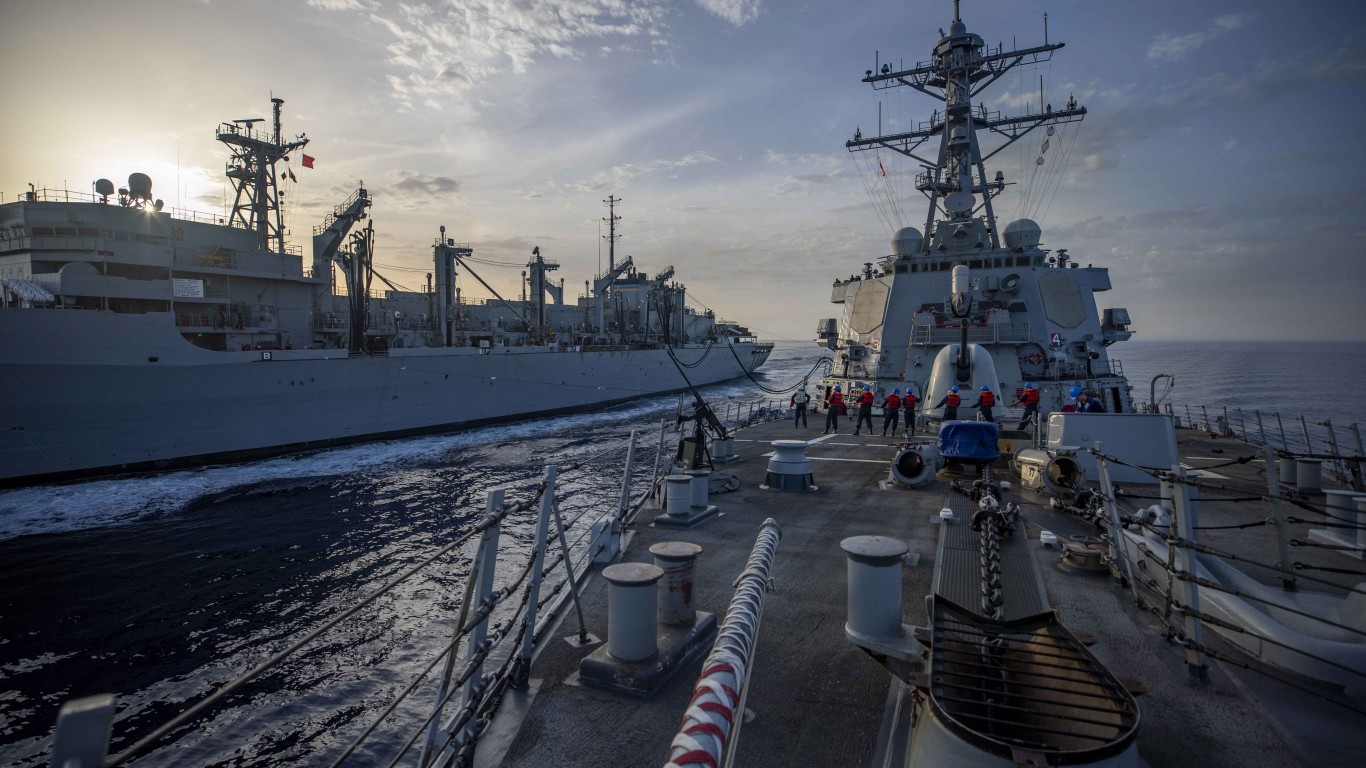
1. Arleigh Burke-class Guided missile destroyer
> Number of boats: 68
Named after a late admiral and chief of naval operations, the Arleigh Burke-class destroyer is, as the name implies, primarily used to lob missiles at enemy targets in the sky, on the water, or beneath the waves. The ships were built by Maine-based Bath Iron Works, a Northrop Grumman subsidiary.
Take This Retirement Quiz To Get Matched With An Advisor Now (Sponsored)
Are you ready for retirement? Planning for retirement can be overwhelming, that’s why it could be a good idea to speak to a fiduciary financial advisor about your goals today.
Start by taking this retirement quiz right here from SmartAsset that will match you with up to 3 financial advisors that serve your area and beyond in 5 minutes. Smart Asset is now matching over 50,000 people a month.
Click here now to get started.
Thank you for reading! Have some feedback for us?
Contact the 24/7 Wall St. editorial team.


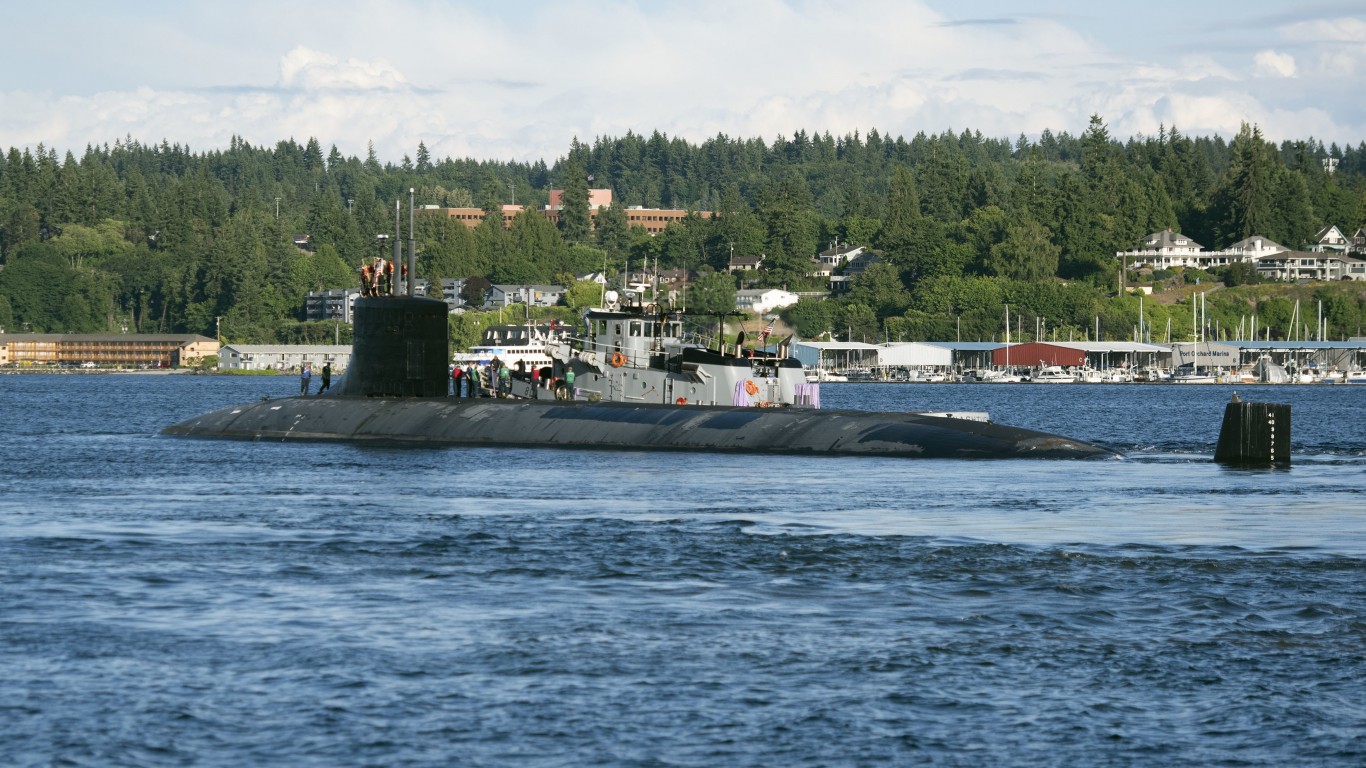
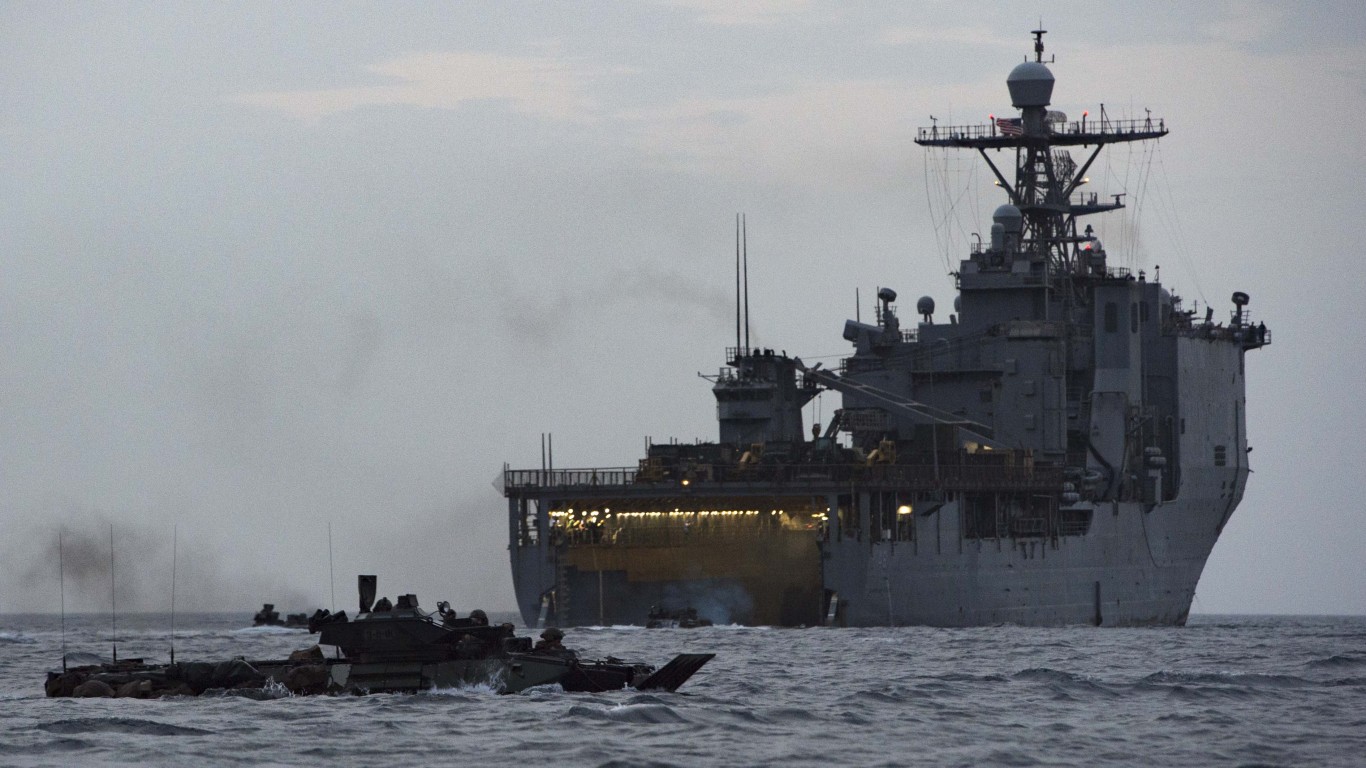
 24/7 Wall St.
24/7 Wall St.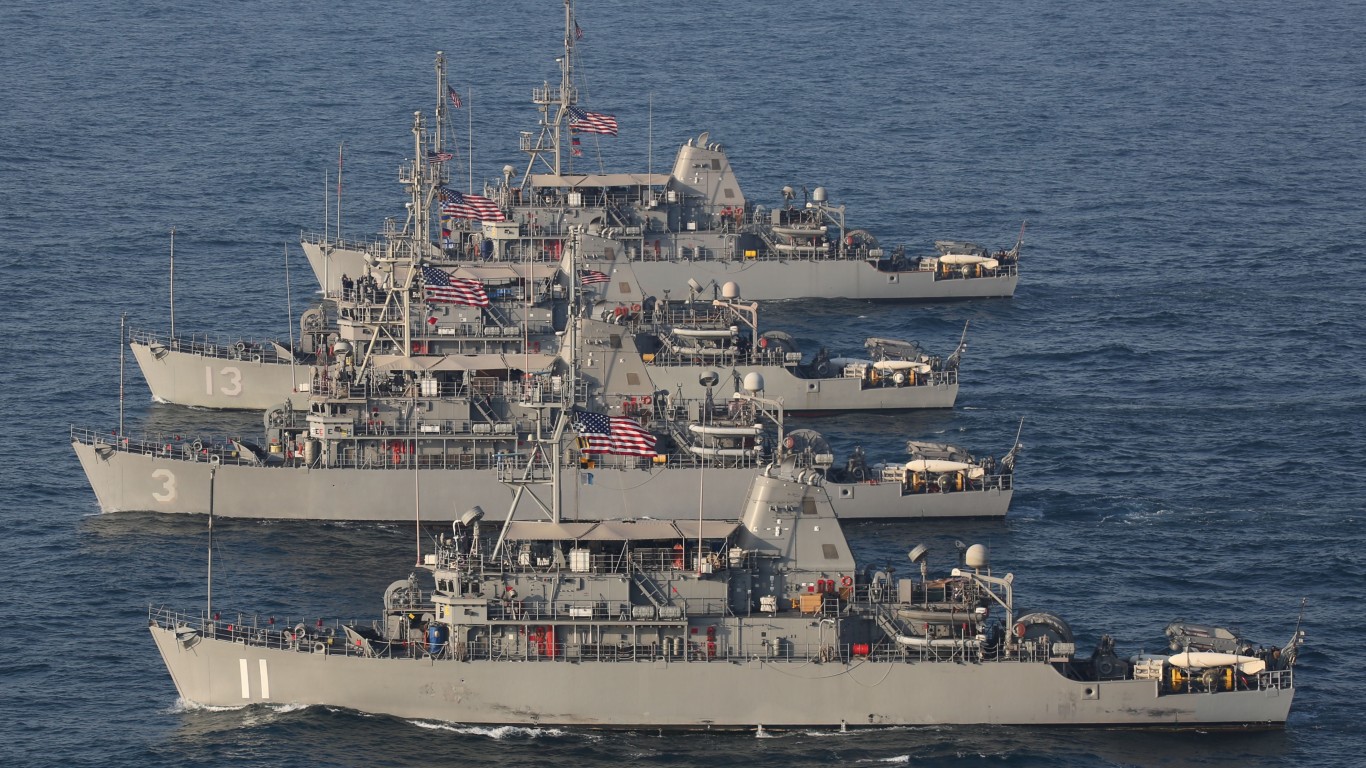
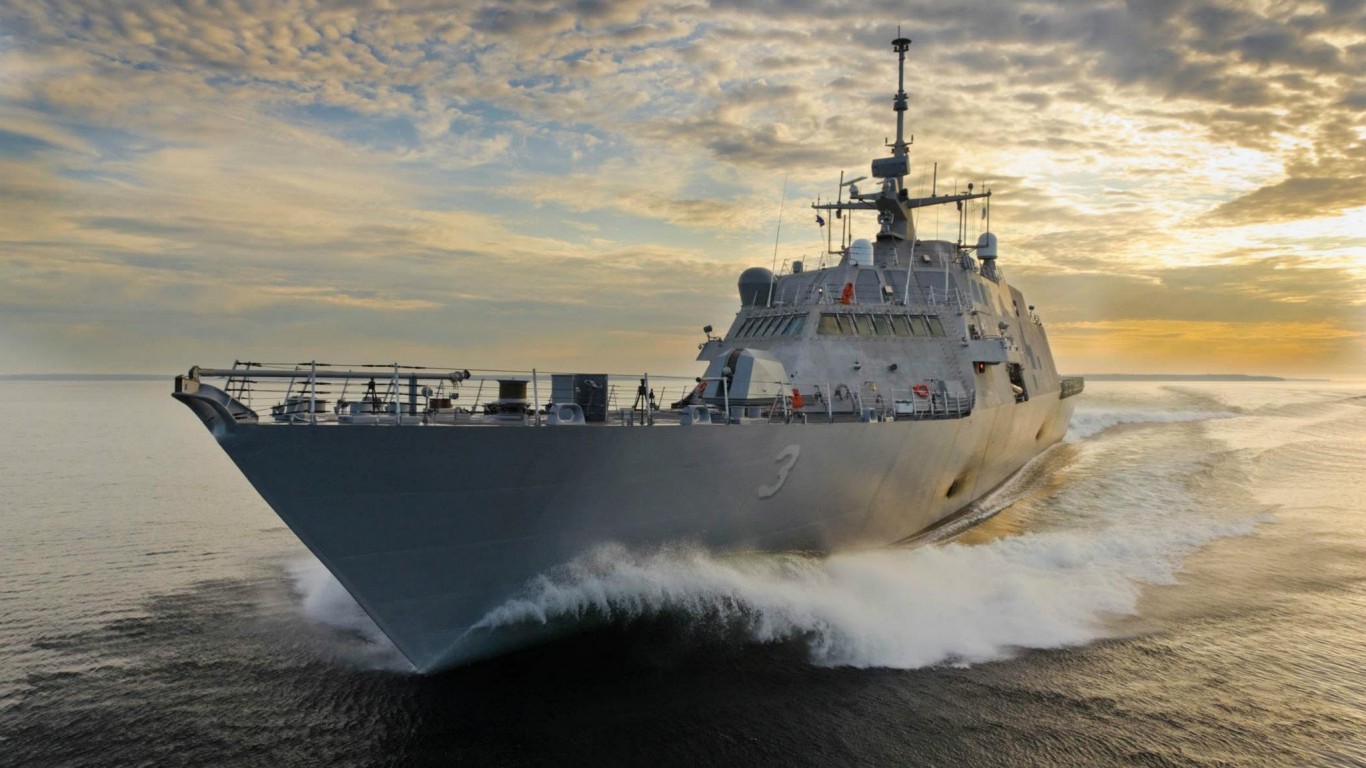
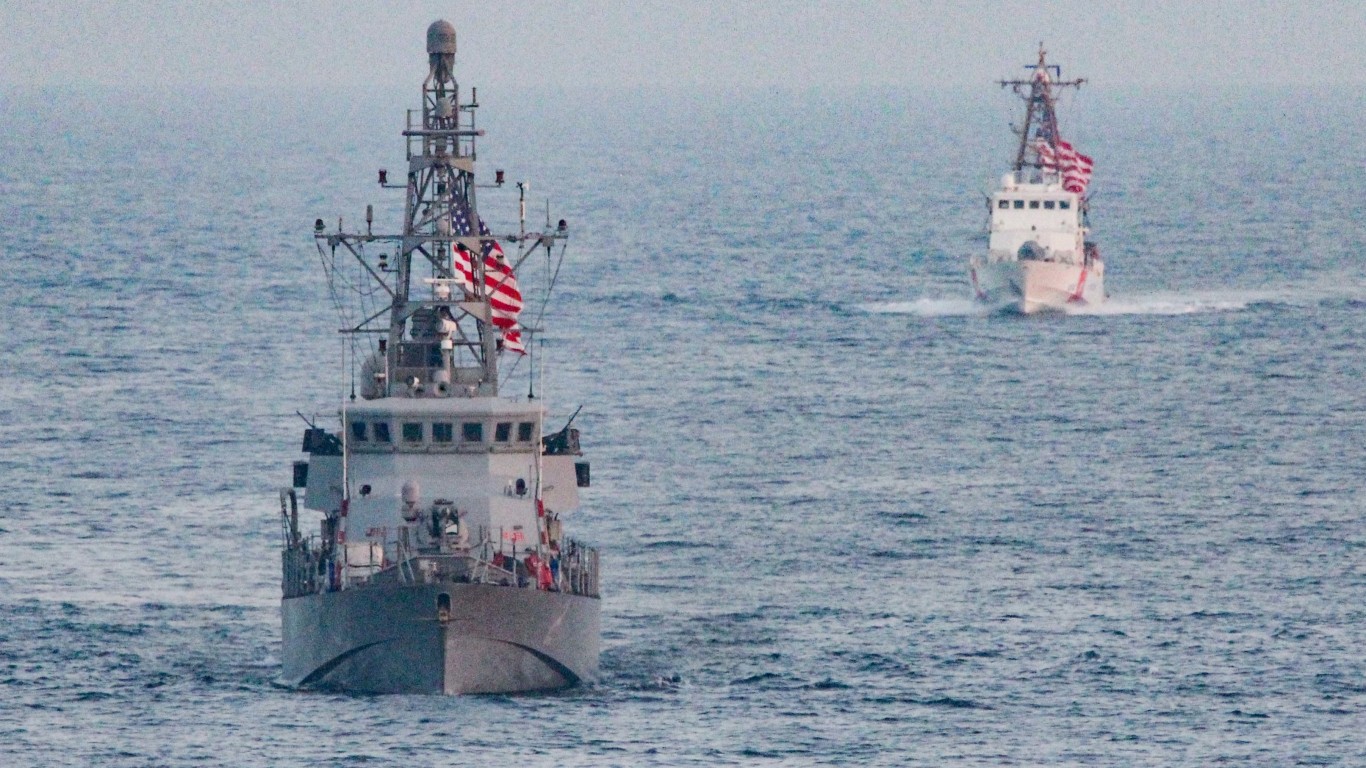
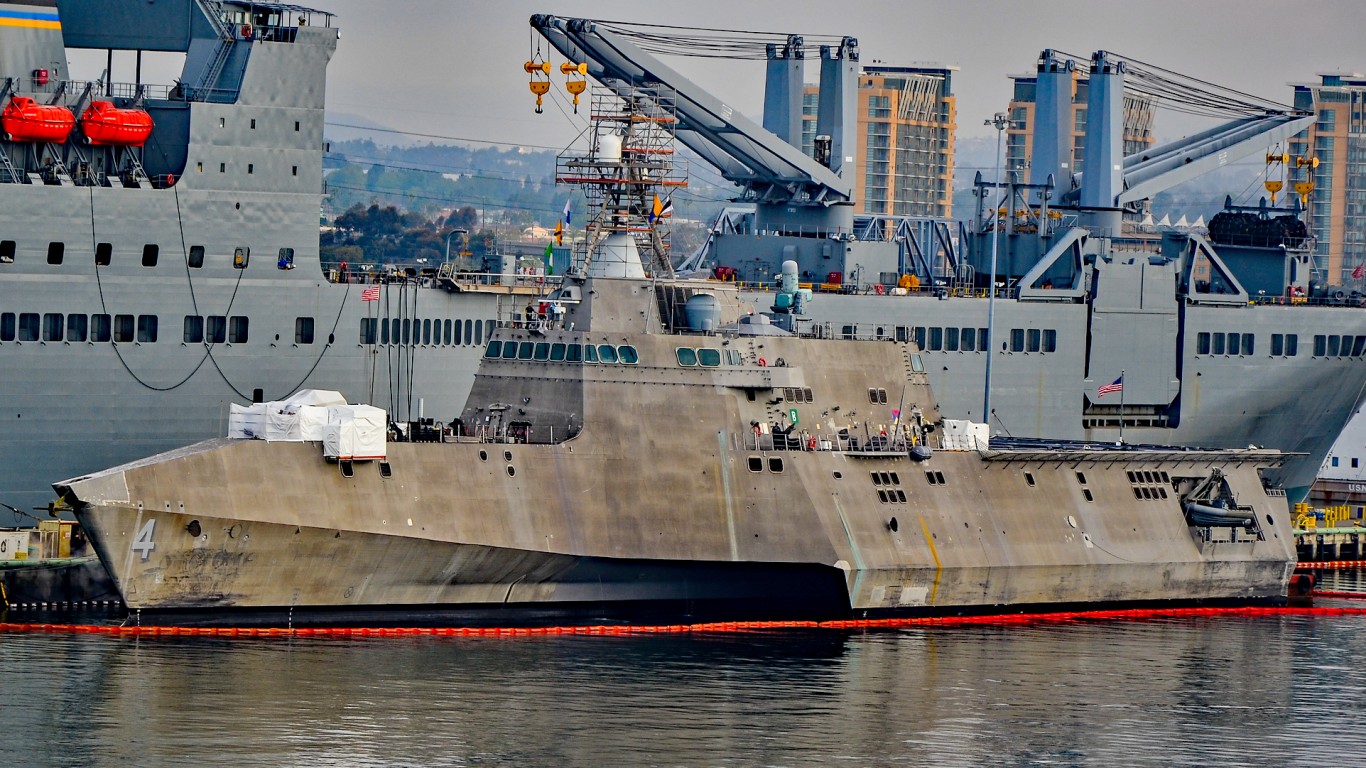


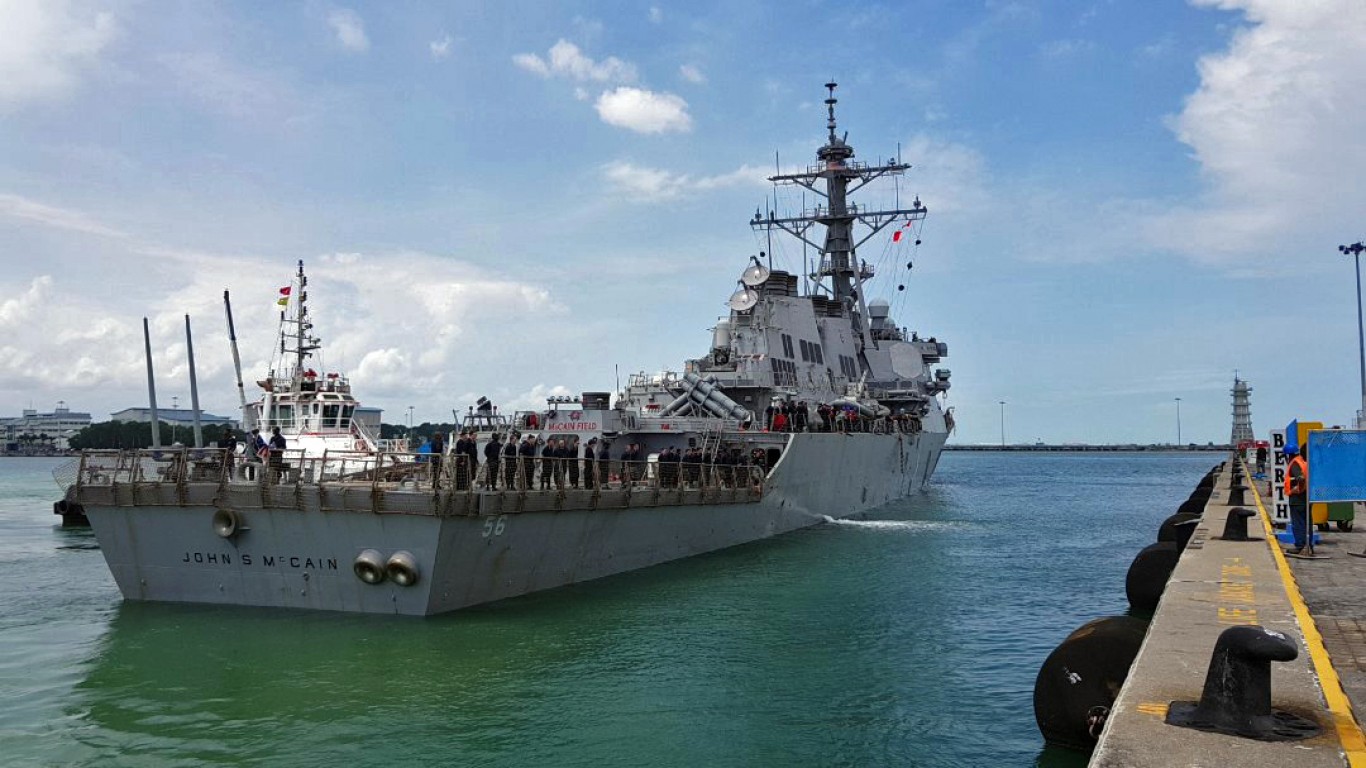 24/7 Wall St.
24/7 Wall St.